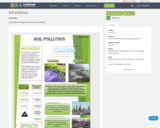
A descriptive infographic about soil pollution
- Subject:
- Chemistry
- Ecology
- Environmental Science
- Material Type:
- Data Set
- Author:
- Rahila Kazi
- Date Added:
- 12/05/2020

A descriptive infographic about soil pollution
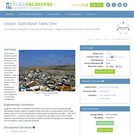
In this lesson, students explore solid waste and its effects on the environment. They will collect classroom trash for analysis and build model landfills in order to understand the process and impact of solid waste management. Students will understand the role of engineers in solid waste management.

In this lesson, students will explore the causes of water pollution and its effects on the environment through the use of models and scientific investigation. In the accompanying activities, they will investigate filtration and aeration processes as they are used for removing pollutants from water. Lastly, they will learn about the role of engineers in water treatment systems.
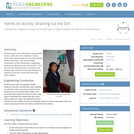
In this activity, students build a water filter with activated carbon, cotton and other materials to remove chocolate powder from water.
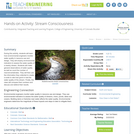
During this activity, students will learn how environmental engineers monitor water quality in resource use and design. They will employ environmental indicators to assess the water quality of a nearby stream. Students will make general observations of water quality as well as count the number of macroinvertabrates. They will then use the information they collected to create a scale to rate how good or bad the water quality of the stream. Finally, the class will compare their numbers and discuss and defend their results.
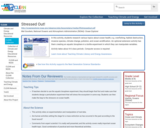
In this activity, students research various topics about ocean health, e.g. overfishing, habitat destruction, invasive species, climate change, pollution, and ocean acidification. An optional extension activity has them creating an aquatic biosphere in a bottle experiment in which they can manipulate variables.

In this activity, students act as environmental engineers involved with the clean up of a toxic spill. Using bioremediation as the process, students select which bacteria they will use to eat up the pollutant spilled. Students learn how engineers use bioremediation to make organism degrade harmful chemicals. Engineers must make sure bacteria have everything they need to live and degrade contaminants for bioremediation to happen. Students learn about the needs of living things by setting up an experiment with yeast. The scientific method is reinforced as students must design the experiment themselves making sure they include a control and complete parts of a formal lab report.

This is a survey course in which we will discuss the science behind historical and current environmental issues. We will discuss the major threats to biodiversity and ecosystem function. We will study how human activities have affected the limited resources of our planet. We will learn how air, water and soil degradation have affected human health. Lastly, we will explore the emerging field of sustainability, what it means, and how it is being applied in todayęs world.

This course explores the application of environmental and economic development planning, policy and management approaches to urban neighborhood community development. Through an applied service learning approach, the course requires students to prepare a sustainable development plan for a community-based non-profit organization. Through this client-based planning project, students will have the opportunity to test how sustainable development concepts and different economic and environmental planning approaches can be applied to advance specific community goals within the constraints of specific neighborhoods and community organizations.
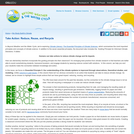
The Take Action column in the free, online magazine Beyond Weather and the Water Cycle suggests actions young people (K-grade 5) can take to reduce the impacts of climate change. The magazine examines the recognized essential principles of climate literacy and the climate sciences as well as the guiding principle for informed climate decisions.
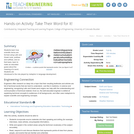
Students learn how scientific terms are formed using Latin and Greek roots, prefixes and suffixes, and on that basis, learn to make an educated guess about the meaning of a word. Students are introduced to the role played by metaphor in language development.
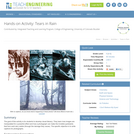
The goal of this activity is for students to develop visual literacy. They learn how images are manipulated for a powerful effect and how a photograph can make the invisible (pollutants that form acid rain) visible (through the damage they cause). The specific objective is to write captions for photographs.

Our linked subjects are (1) the historical process by which the meaning of technology has been constructed, and (2) the concurrent transformation of the environment. To explain the emergence of technology as a pivotal word (and concept) in contemporary public discourse, we will examine responses — chiefly political and literary — to the development of the mechanic arts, and to the linked social, cultural, and ecological transformation of 19th- and 20th-century American society, culture, and landscape.
Note: In the interests of freshness and topicality we regard the STS.464 syllabus as sufficiently flexible to permit some — mostly minor — variations from year to year. One example of a different STS.464 syllabus can be found in STS.464 Cultural History of Technology, Spring 2005.
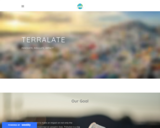
This is an example of one teams project based learning process. The team tested several recyclable materials to find out which ones have the best insulating properties. Check out their research!
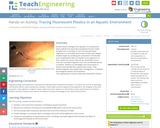
Student teams investigate the migration of small-particle plastic pollution by exposing invertebrates found in water samples from a local lake or river to fluorescent bead fragments in a controlled environment of their own designs. Students begin by reviewing the composition of food webs and considering the ethics of studies on live organisms. In their model microcosms, they set up a food web so as to trace the microbead migration from one invertebrate species to another. Students use blacklights and microscopes to observe and quantify their experimental results. They develop diagrams that explain their investigations—modeling the ecological impacts of microplastics.

This class surveys the current concepts, theories, and issues in strategic management of transportation organizations. It provides transportation logistics and engineering systems students with an overview of the operating context, leadership challenges, strategies, and management tools that are used in today’s public and private transportation organizations. The following concepts, tools, and issues are presented in both public and private sector cases: alternative models of decision-making, strategic planning (e.g., use of SWOT analysis and scenario development), stakeholder valuation and analysis, government-based regulation and cooperation within the transportation enterprise, disaster communications, systems safety, change management, and the impact of globalization.

Through a combination of lectures, cases, and class discussions this subject examines the economic and political conflict between transportation and the environment. It investigates the role of government regulation, green business and transportation policy as facilitators of economic development and environmental sustainability. It analyzes a variety of international policy problems including government-business relations; the role of interest groups, non-governmental organizations, and the public and media in the regulation of the automobile; sustainable development; global warming; the politics of risk and siting of transport facilities; environmental justice; equity; and transportation and public health in the urban metropolis. It provides students with an opportunity to apply transportation and planning methods to developing policy alternatives in the context of environmental politics.
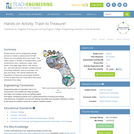
Student teams use the engineering design process to create a useful product of their choice out of recyclable items and "trash." The class is given a "landfill" of reusable items, such as aluminum cans, cardboard, paper, juice boxes, chip bags, egg cartons, milk cartons, etc., and each group is allowed a limited amount of bonding materials, such as duct tape, hot glue and string. This activity addresses the importance of reuse and encourages students to look at ways they can reuse items they would otherwise throw away.
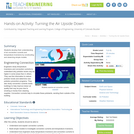
Students develop their understanding of air convection currents and temperature inversions by constructing and observing simple models.
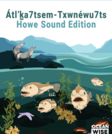
The Ocean Wise Howe Sound Education Kit Is available in multiple grade editions, all in French and English and include both a student work book and teacher accompanying guidebook. Each kit features several lessons on the unique UNESCO heritage site of the Howe Sound environment.
Átl’ḵa7tsem/Txwnéwu7ts/ Howe Sound is a coastal fjord ecosystem in the Salish Sea. It is a vital area to First Nation communities, providing natural resources that allowed Indigenous peoples to thrive for generations before colonization. Following colonization and years of destructive human activity, such as industrial and coastal development, efforts are currently underway by government, industry groups, and local communities to transition the Sound’s marine ecosystem from crisis to recovery. Indigenous communities, in particular, are working hard to restore life and traditional practices for generations to come.
Using Átl’ḵa7tsem/ Txwnéwu7ts/ Howe Sound as a case study, students can recognize how ecosystems, species, human impact, and climate change are interconnected. This work is essential for students to make informed decisions as the future stewards of our planet.